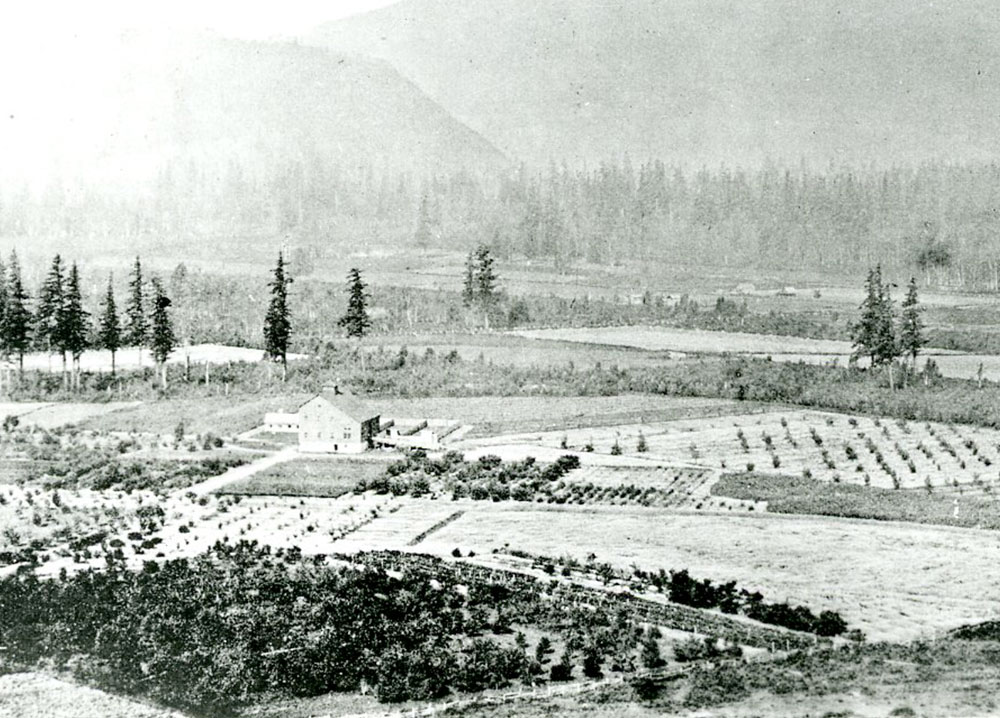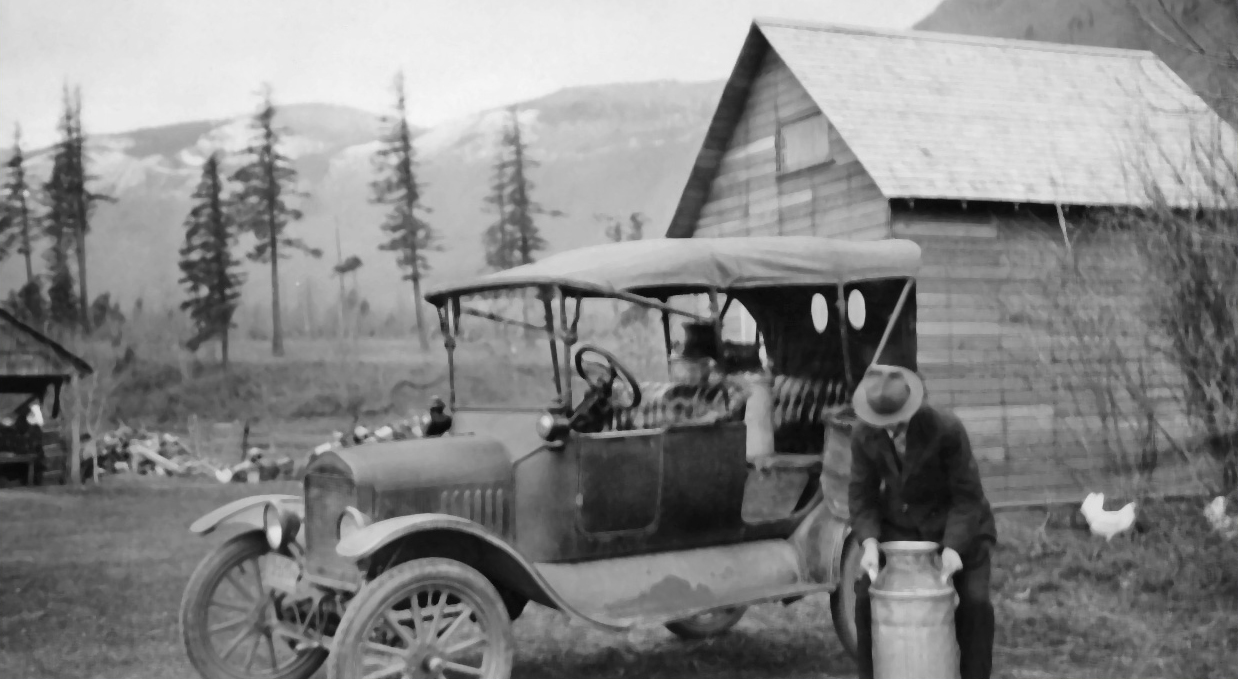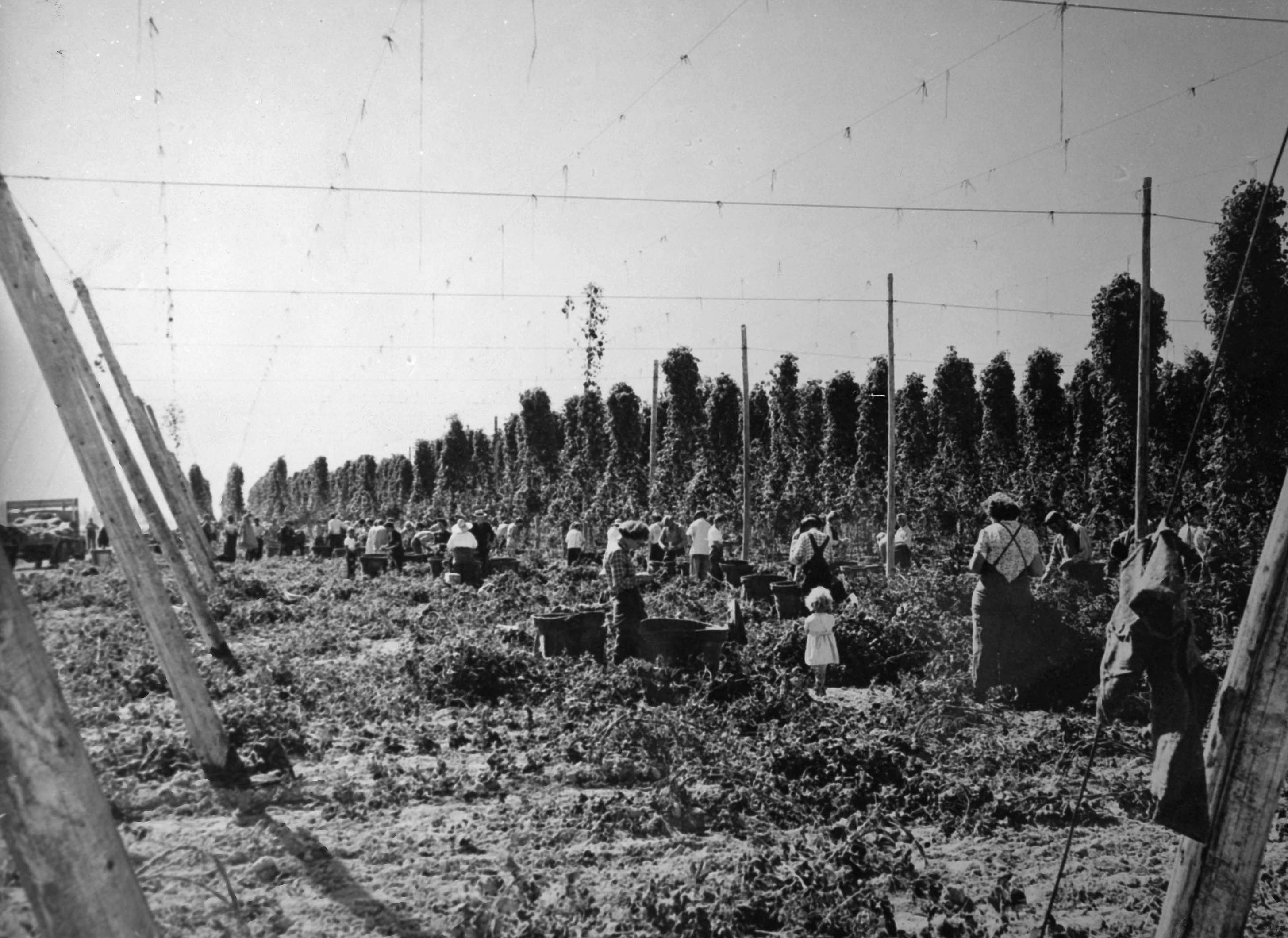First Wave of Immigration: Early Farming in the Eastern Fraser Valley
The homesteaders of the Agassiz-Harrison Valley raised dairy and beef cattle and oxen and horses for ploughing, pulling carts, wagons, and sleighs. From the 1860s to the early 1900s, butter and milk were produced for sale alongside orchard fruit, including peaches and plums, potatoes and other root crops, tomatoes, hops and corn. Most families were only able to support a few dairy cows as they were milked by hand. These small family-run farms were a labour of love, requiring long hours and the cooperation of everyone, to get all the work done.
Most of the early settlers in the eastern Fraser Valley were unfamiliar with the climate and soil conditions. Orcharding and cash crop success required a trial-and-error approach until the Agassiz Dominion Experimental Farm was established in 1889. The research at the Farm quickly identified which plant varieties were best suited to the Valley and the most efficient methods for tending to them to ensure bountiful crops.

Aerial view of the Agassiz Dominion Experimental Farm showing buildings and fields in production, late 1800s.
In addition to the Agassiz Family, other early farmers in the community included:
- John Walker, who pre-empted 175 acres of land adjacent to the Agassiz farm. He amassed 640 acres before selling them to John McDonald. This land was later divided into the BC Hop Company and the Whelpton Farm.
- John, Alexander “Sandy,” and James Duncan of Harrison Mills. They established Orchard Bluff Farm and a dairy at Bonnie Doone Farm.
- Joseph Farr, who owned most of the Hamersley Prairie in Agassiz where he raised cattle, sheep, and horses. Farr’s land was subsequently purchased by A. St. George Hamersley, the first Reeve of the District of Kent, an advocate for the development of dykes and drainage systems, and one of the first farmers to grow hops in the area.



